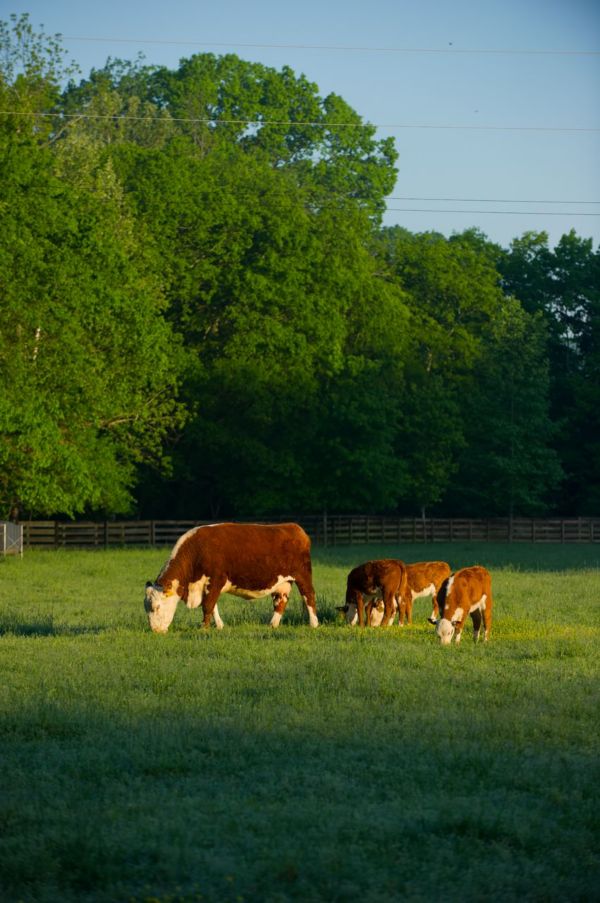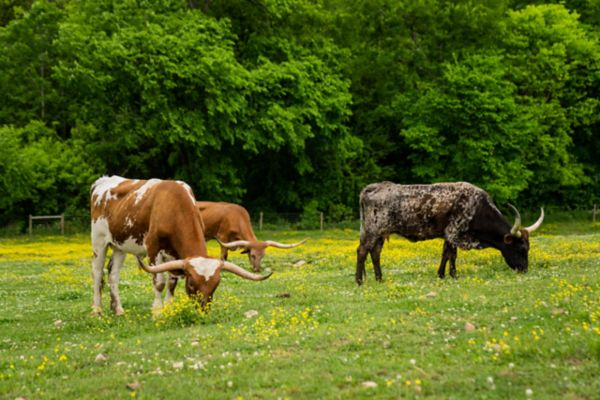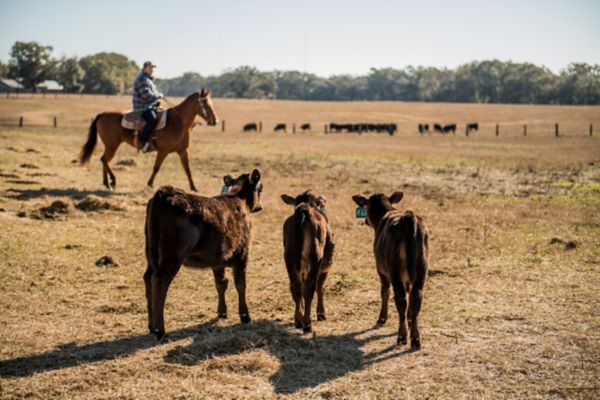Your Guide to Raising Healthy Beef Calves
Good calf health at birth plays a critical role in growth and performance and can significantly change your operation’s bottom line. Monitoring young calves for normal and abnormal behaviors allows you to identify an issue and act quickly.
Here’s your guide to raising healthy calves.
Calf health begins at breeding
Producers should recognize that calf health starts at bull choice, explained John B. Hall, Ph.D., PAS, a University of Idaho professor and extension beef specialist. Selecting bulls that produce offspring with proper birth weights increases calf survivability and dam reproductive performance.
“This is especially important for first calf heifers,” he said. “In a mature herd, they can handle larger calves with fewer complications.”
Dystocia, or calving difficulty, is the top reason for calf death for three reasons:
- Increased infectious disease risk.
- Increased chances a calf is unable to maintain a healthy body temperature.
- Decreased passive transfer and absorption of antibodies.
Calves that survive a difficult birth may struggle to achieve desired weight gains compared to their peers, ultimately impacting profitability over time.
Dystocia can also impact dam health with the potential to decrease her fertility. Establishing a relationship with a veterinarian can help you know what to look for, develop a calf management protocol and treatment strategy to improve the likelihood of recovery.
Calf health at birth
The first four hours of life are critical. Within an hour, a calf should be standing and nursing.
“By 12 hours after birth, their ability to absorb colostrum is cut in half and done within 24 hours,” Hall explained. “If they are not nursing, you need to give a good colostrum substitute that can be bottle fed or given through an esophageal tube feeder with at least 100 grams (about 3.53 oz) of IgG as quickly as possible.”
After a calf is standing, nursing, and considered healthy, some insert ear tags and castrate bull calves. Giving the animal a nutrient injection boosts and can support health during the first few days.
“We’re a little different because we are a research station, but on the first day of life, our calves receive a multi-mineral injection, a vitamin A, D, and E injection, and a clostridial vaccine,” said Hall. “Talk with your health professionals to decide what is best for your operation.”
Monitoring calf health status as often as possible makes it possible to catch signs of sickness quickly. Daily is ideal, but not practical on every operation.
“The most common diseases like pink eye, foot root, respiratory diseases, and scours need to be treated immediately to keep the animal healthy and reduce the spread to other calves,” Hall said.
Consider assembling a first aid kit with these supplies so you can quickly help a sick calf:
- Frozen colostrum or a colostrum replacer
- Tube feeder
- Thermometer
- Syringes and needles
- Iodine
- Electrolytes
- Probiotics
- Nutrient drenches
- Antibiotics as recommended by veterinarian
- Treatment protocols
Learn more about buildling a first aid kit for cattle.
Understanding calf behaviors
Not all changes in calf behaviors are attributed to illness. Changes in housing arrangements, vaccinations, or weather conditions can alter a calf’s behavior. If you notice a calf is “off,” consider if any of these factors may be at play.
Cows are stoic animals and mask discomfort. However, the University of Georgia Extension cautions that if you see any of these signs, it’s a sign a calf is sick:
- Dull, listless behavior
- Lack of appetite
- Slow movement, unable to keep up with others
- Teeth grinding
- Sunken eye appearance
- Lackluster appearance such as dull eyes, drooped head, lowered ears, and/or tucked tail
- Loose or watery stool
Paying attention to the mucous membranes, the area around a calf’s eyes, nose, and mouth, can also supply clues about the animal’s health. Under normal circumstances, the mucous membranes should be moist and mostly clear.
Evaluation technique
Here's a useful technique for evaluation: Apply gentle pressure to the gum line in the calf's mouth using your finger and then release it. In a healthy calf, you should see a prompt transition of gum color from white to pink within one or two seconds.
University of Wisconsin Madison School of Veterinary Medicine developed a free calf heath scoring chart for tracking changes in calves. The document includes pictures illustrating symptoms.
Providing a clean calving environment
Keeping new calves in the cleanest environment as much as possible helps reduce the chance of disease. One choice is known as the Sand Hills calving method, where cows calve in a pasture for seven to 10 days (about 1 and a half weeks). The cow/calf pairs remain in the calving pasture and then pregnant cows are moved to clean pasture to calve, Hall explained.
“The big cattle operations out west do that, but you need a lot of pastures, and water can sometimes be a challenge in the winter,” he said.
Another choice is to move cow/calf pairs to a clean pasture while leaving pregnant cows together in a separate pasture.
“Depending on how many cows and acres of land you have, it might be difficult to move pairs out,” he said. “But if you can keep them in a cleaner environment when they are young, they are less likely to develop scours.”
Feeding for future calf health
Proper dam nutrition throughout gestation is key to good calf health. Providing the cow with enough forage or feed, and trace minerals is especially important during the last trimester.
“Cow nutritional needs increase in the last trimester. That is when calves are growing the fastest in utero, so you need to make sure the cows are of a good body weight,” Hall said. “Like with human babies, a low birth weight in calves can be problematic.”
Feeding a trace mineral package to the dam based on your geographic location and deficiencies also supports calf health. In Hall’s area, producers with a spring calving season typically use supplements with vitamins A, D, and E.
“Those three vitamins can become deficient in winter feedstuffs, and they do a variety of things from promoting gut lining health, the growth of calf in utero, and immune function in the animal,” he said. “Check with your veterinarian or Extension professional to determine what you may need to provide.”
Calves feeding after birth
Calves rely on their mother’s milk for nutrition during the first two months of life. By three months of age, they begin consuming forage and feed in addition to nursing. Ensuring that forage or feed and a recommended mineral supplement are readily available enables the calf to absorb the nutrients it needs to achieve ideal daily weight gains.
Learn more about calf feeding and weaning.
Controlling internal parasites
Internal parasites can rob nutrients from young growing calves affecting their thriftiness, weight gain and overall health. Hall recommends working with a veterinarian to decide the best parasite control program for your operation.
“When I was back east at Virginia Tech, we saw good value in deworming on spring born calves, whereas fall born calves may not need deworming until the grass comes back in spring,” Hall said. “Timing depends on your management plan and geographic location in the United States.”
Learn about common cow diseases >
Read more about choosing livestock antibiotics and vaccines >
Reducing external parasites
External parasites can spread diseases and distract cattle from eating, drinking, and resting, which can lead to dehydration and weight loss, lower energy levels, and decreased lactation in cows with a calf at her side. Minimizing the fly population requires a multi-step process that can include a range of strategies, including:
- Facility and pasture management methods that reduce pest breeding grounds
- Pesticides labeled for use in and around cattle barns
- Dips
- Dusts
- Medicated ear tags
- Feed-through products
- Injectables
- Pour-ons
- Sprays
Looking ahead to successful weaning
Keeping calves in good health is critical to successful weaning. Separating calves from their mothers is stressful, and stress can interfere with an animal’s immunity. In many western states, calves are branded around 45 days (about 1 and a half months) of age and vaccinated with a 7 or 8-way vaccine that covers clostridial and bovine respiratory disease complex.
“Our calves get vaccinated three times before weaning because we have run into problems with summer pneumonia,” he said. “A lot of producers out here cannot get their hands on calves that often in the summer, so they are vaccinated at branding and weaning. This timing coincides with when calves’ immune system takes over and passive immunity from their mother runs out. Ideally, vaccines should be given two weeks prior to weaning but if that is not possible, administering them at weaning is better than not at all.”
Calves and calving season
Having a limited calving season is another part to maintaining good calf health. When you care for calves in groups, whether vaccinating, branding or castrating, it supports a more efficient, effective process.
Find all your cattle farm needs from feed and stock tanks, to antibiotics and first aid supplies.
Get everything you need to keep your cattle healthy at the Tractor Supply Co RX stop.



